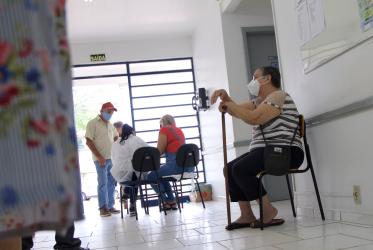The following is the third in a series about the response of the WCC, member churches and all people of goodwill to COVID-19. The purpose of these stories is to share hopes, concerns and best practices among our one human family. - WCC director of communication Marianne Ejdersten
By Claus Grue*
In the past several months, beginning with an epidemic that quickly became an emergency situation, COVID-19 has escalated into a global crisis, spreading fear and uncertainty everywhere.
Governments and health authorities around the world have taken bold steps to prevent the coronavirus from spreading. Schools, offices and borders have been closed. Fairs, concerts, football games and other events have been cancelled, and people aren’t allowed to move around and get together as they used to. Along with plunging stock markets, layoffs have surged. The current situation is unprecedented and panic appears to have taken a grip on events.
From a professional communication perspective, the coronavirus pandemic is no different from other crises. It represents an extraordinary situation where people’s lives, health and livelihoods are at stake. It meets all criteria of a crisis and must thus be given top priority. Step one is to calmly analyse and continuously monitor the situation. Step two is to define a viable communication strategy and step three is to implement it through the most effective channels.
For the World Council of Churches (WCC), member churches and partners, making factual information from the World Health Organization and national health authorities readily available is one obvious measure. Communicating what the WCC, member churches and partners are doing – and can do – to relieve the crisis, is another.
How and what to communicate at local levels depends on contexts and patterns in terms of how target groups consume information. This differs from place to place. It is thus important to break down messages to local conditions and use the most effective channels in each case to get them across.
What, how, why, who and what now?
How the Corona crisis unfolds in terms of public perception will to a large extent depend on reliable and timely communication about and around the crisis. Explaining to the public what has happened, how and why it happened, who is affected and what is being done to cope with the situation, are core ingredients in crisis communication. It is all about bringing clarity and understanding, easing anxiety and calming things down. In this case, all that is the responsibility of governments and health authorities. What faith-based organizations, churches and faith communities can do is to help getting key messages across through their own channels and to provide a spiritual dimension to things.
Factual information, such as instructions and advice on how to avoid being infected, is the easy part of crisis communication. Conveying a clear and trustworthy picture of the seriousness of the pandemic and how it is expected to develop is more difficult. There are still unknowns, which leaves room for speculation and rumours. Clarity about what is known, as well as unknown, is crucial in order to sustain trust and keep expectations at a realistic level. Building acceptance among the public of the fact that no one has all the answers, at least not yet, is a challenge, especially when people demand fast answers and actions. But honesty breeds trust and trust remains critical for successful communication in the long run.
How churches can address the coronavirus crisis
Churches are in a unique position to influence the public at all levels in society. The church is often at the centre of rural communities, where church leaders and pastors are trusted and listened to. Along with prayers and pastoral care follows a responsibility to relate to urgent situations in a more practical sense. Carrying critical messages from WHO and local health authorities in order to raise awareness and promote compliance among congregations has proven effective in similar situations where viral infections have threatened to spread. As part of the ecumenical movement and the Christian fellowship, member churches worldwide have access to updated information material and other tools to support such initiatives (see link below).
The WCC communication team can also offer guidance and further advice, as well as concrete capacity building sessions in crisis communication.
Threat and opportunity
Reliability, consistency and endurance are critical in crisis situations. So is leadership. Winston Churchill once said: “The difference between mere management and leadership is communication.” That is particularly true in crisis situations, and even more valid in today’s digital communication environment.
In the midst of the turmoil, it is important to look upon a crisis, not only as a threat but as an opportunity to build trust and goodwill.
Finally, here are a few basic guidelines for successful crisis communication:
- Be vigilant.
- Have a plan for the unknown.
- Have a crisis organization in place with clear roles and mandates.
- Analyse, strategize and implement – in that order.
- Communicate briefly and succinctly in a timely manner.
- Focus always on your own organization’s role and responsibilities.
For more information, please contact WCC Communication, email [email protected]
WCC resources on the coronavirus: www.oikoumene.org/corona
WCC urges: “give highest priority to protect life” (WCC press release of 18 March 2020)
In South Korea, as church life goes online, ‘a church is a church for the world’ (WCC press release of 18 March 2020)
As world turns virtual during COVID-19 crisis, it is easy to pray (WCC press release of 17 March 2020)
WCC takes strong measures to protect from coronavirus (WCC press release from 13 March 2020)
*Claus Grue is a communication consultant for the World Council of Churches.







